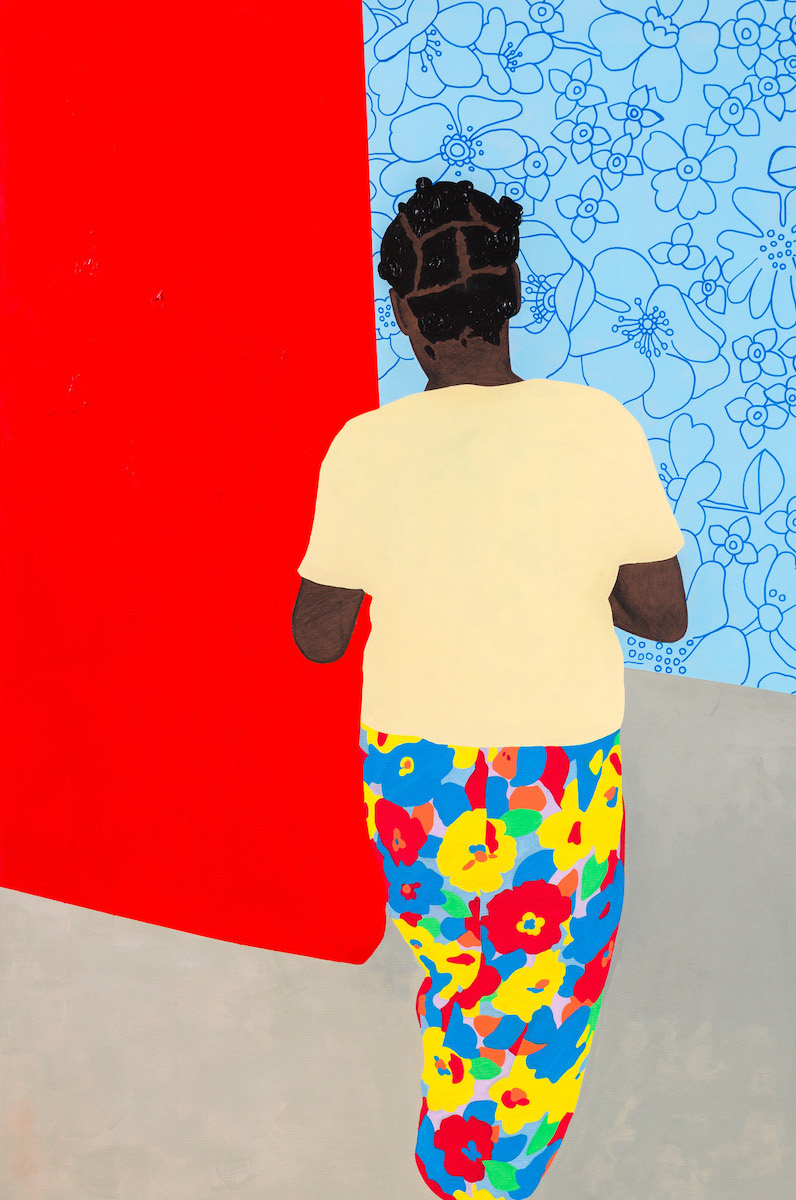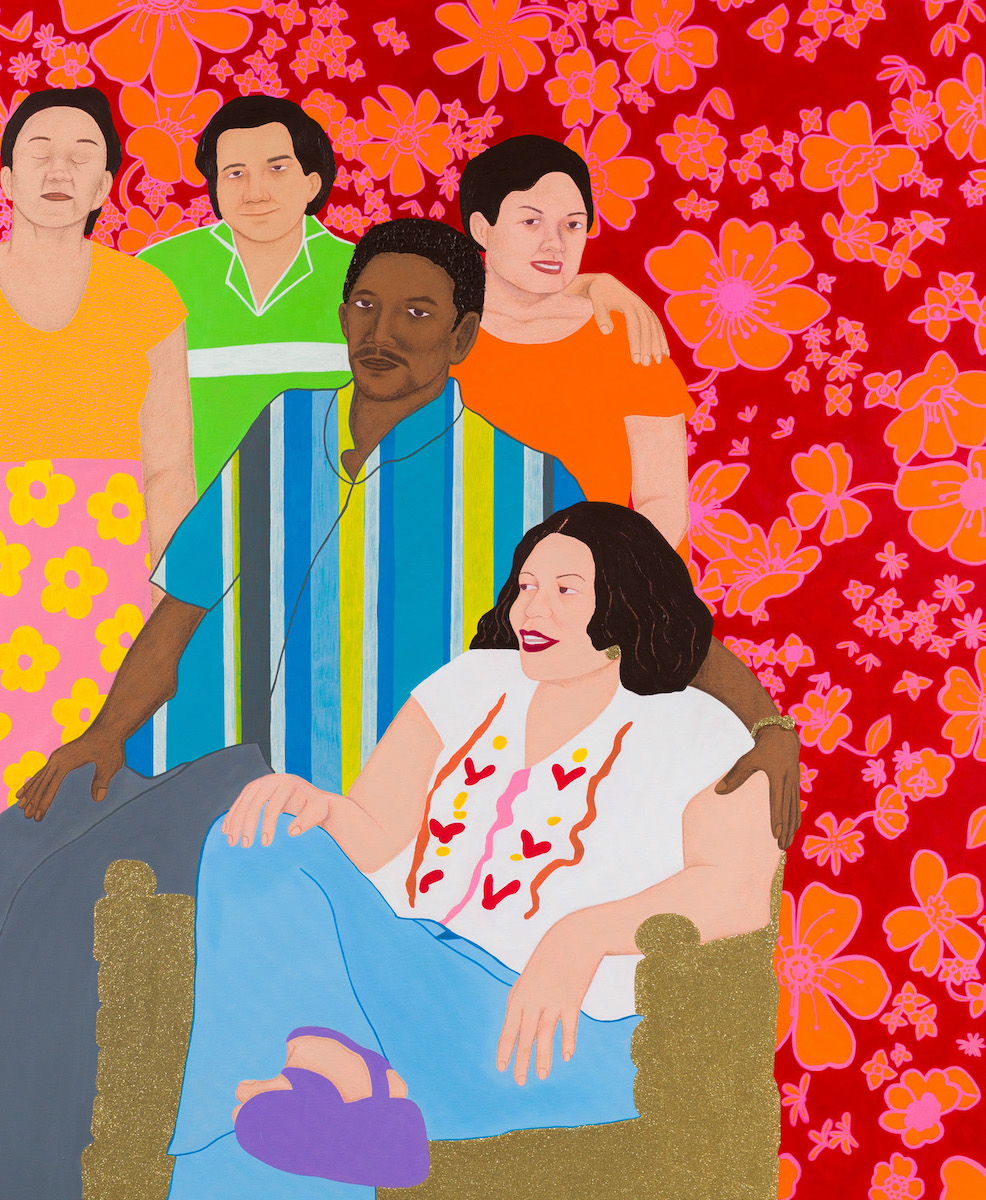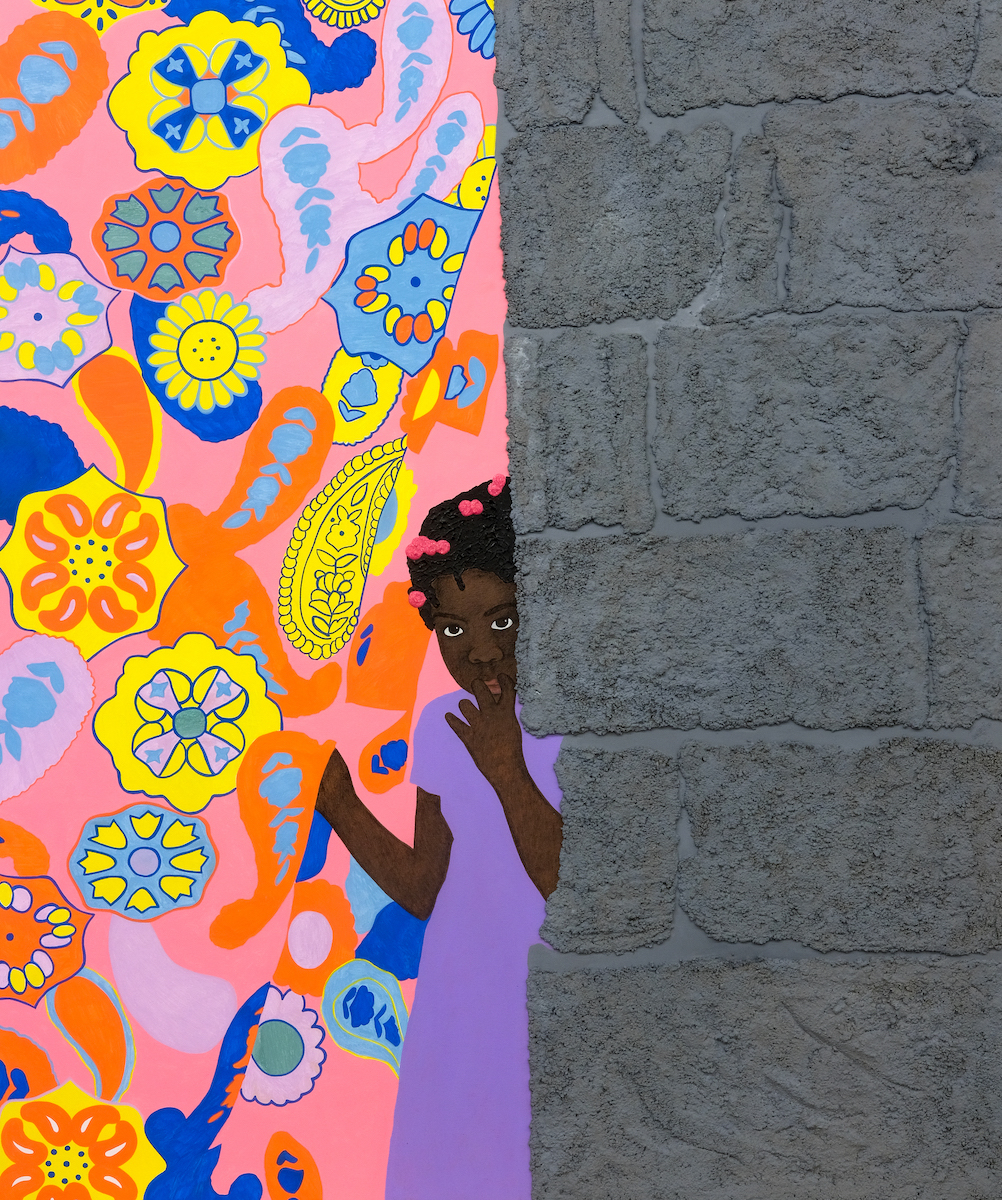The two dozen or so paintings Bronx-based artist Tiffany Alfonseca made during a summer residency at the Mistake Room not only represent a kind of reimagined family photo album, but are intentionally rendered with fidelity to those source materials and their awkward vernacular, vintage aesthetic. Further, the works are installed in a unified field of walls painted a pale pink — the same hue that forms the foundational layer for the skin tones in all the portraits. Several threads converge across the suite of carefully rendered, large-scale images, but the mindful rendering of variations in skin tone as a metric for family resemblances and a more insidious intra-community colorism, along with the tumultuous blending of Black and Brown in her own Afro-Latinx family space, is one of the central ones. Like many of the choices Alfonseca makes, the presence of an invisible but universal underlying foundation to her nuanced palette has power in both the formal and narrative dimensions of the work.

Tiffany Alfonseca, Por Alexandra, 2021, Acrylic, color pencil, charcoal on canvas, 72 x 48 inches. Courtesy of the artist and The Mistake Room, Los Angeles. Photo Credit: Ian Byers-Gamber.
Another example of this is the matrilineal armature of the intersecting storylines — women are at the center of the birthdays, weddings, vacations, chores, candid and quiet moments and formal occasions captured first on cameras, and now in generously evocative paint and pencil. The stilted headshots and defiant children, the richly textured and colorful patterns of clothes from eras and occasions, the pristine upholstery, the glittering bangles, the haircuts and party dresses, the vibrancy of color at every turn, the taut smile held for just a smidge too long — all taken together the whole “album” imparts a sense of a family that is, like everyone’s, both absolutely ordinary and utterly remarkable.

Tiffany Alfonseca, Alfonseca Rondon, 2021, Acrylic, color pencil, glitter on canvas, 72 x 60 inches. Courtesy of the artist and The Mistake Room, Los Angeles. Photo Credit: Ian Byers-Gamber.
But Alfonseca takes all of this one step further still in her vivid and deliberative studio practice, as she makes the most effective and winsome gestures in the many opportunities to create not only exuberant color fields and patterns, but also a surprising and strategic impasto in hair and sometimes fabric and even concrete. In works like the fantastical “Dahianni” and surrealist “Por Alexandra” as well as the pageantry of a nearly Op-Art, Pattern & Decoration visual workout in “Alfonseca-Rondon,” this alleviates the flatness of the photographic spaces and re-grounds the works in an embodied presence that transcends the informational archive. In this way, Alfonseca does more than chronicle and remember, she creates new things that come directly from her own energy and hands, and she thereby informs her history with the fresh living presence of herself within it.
Tiffany Alfonseca: De las manos que nos crearon
September 25 – December 18


